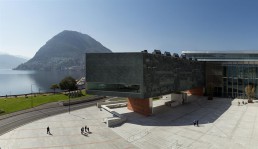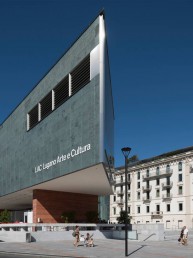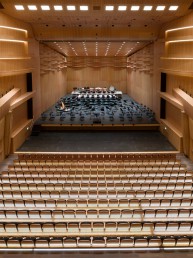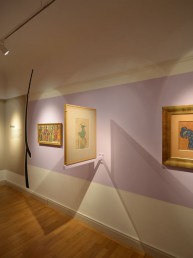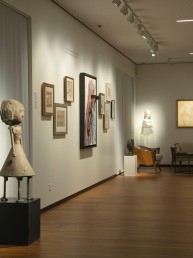The LAC: this striking building overlooking the lake hosts a large variety of exhibitions, events, concerts, theatre and dance performances, and a tightly packed programme of different cultural activities.
The LAC is also home to the newly-created Italian Switzerland Art Museum, created thanks to the union of the Cantonal Art Museum with the City of Lugano Art Museum. The gallery, covering three floors, holds the permanent collection of the city of Lugano and of the Canton Ticino, as well as temporary exhibitions and installations.
A new 1000-seat concert and theatre hall, entirely wood-panelled and fitted with a special modular, removable acoustic shell, hosts a variety of performances and concerts.
The LAC is also home to the theatre and music festivals LuganoInScena and LuganoMusica, as well as the resident FinziPasca Company and Italian Switzerland Orchestra; it also hosts the concert season planned by RSI (Swiss Radio and Television Company).
Opened in 1989, the MUSEC, (Lugano Museum of Cultures), preserves Serge Birignoni’s collection of ethnic art from Southeast Asia, India, Indonesia, Oceania and the Far East.
The Alfredo and Emma Nodari collection, on the other hand, includes mostly African artefacts and art pieces, while its most important piece is Picasso’s “A different gaze”.
Braglia Foundation
Anna and Gabriele Braglia created this Foundation and named it after them.
Over the course of more than 50 years, they cultivated their passion for art and collected masterpieces by some of the greatest artist of the Twentieth century, such as Picasso, Balla, Modigliani and many more.
The Braglia family is also one of the most important collectors of Italian-Slovenian artist Anton Zoran’s pieces, including watercolours, drawings and oil paintings.
The German Expressionism collection is also particularly important, holding pieces by some of the main exponents of this current, such as Klee, Kandinsky, von Jawlensky, Macke, Marc, Münter, Nolde, von Werefkin, and more.
The art gallery was designed and carefully curated by architect Carlo Rampazzi.

